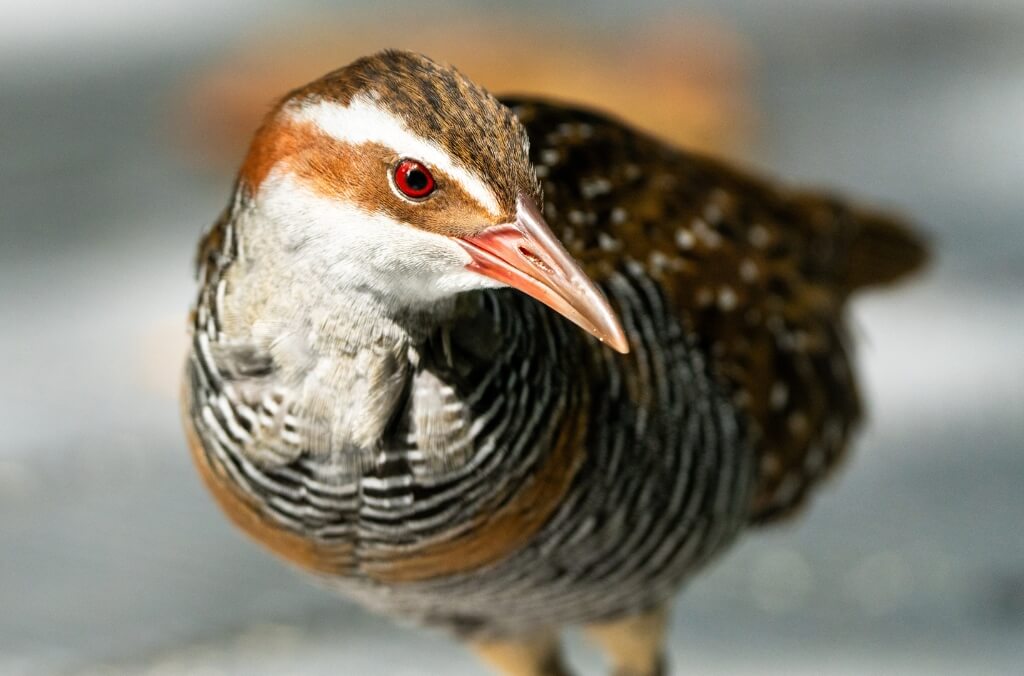Parasites of the plant world
Sydney Olympic Park is home to a diverse range of flora, from towering eucalypts to the groundcovers below our feet. Amongst the vegetation an intriguing array of parasitic plants can be found.
What are parasitic plants?
Parasitic plants are those which rely on a host plant from a different species to provide some or all of their water and nutritional needs. While some parasitic plants can photosynthesis themselves, they also siphon resources from their host to aid in their growth particularly in the early stages of development. Despite this relationship often providing no reciprocal benefit to their host, parasitic plants play an important ecological role, providing food and shelter to the broader ecosystem. Here are three common parasitic native plants found around the Parklands.
Creeping Mistletoe (Muellerina eucalyptoides)
Creeping Mistletoe can be spotted around the Parklands, living on acacias, eucalypts, and casuarinas trees. Rather than deep roots, mistletoes form a holdfast on host stems and insert a root-like structure call a “haustoria” into the host tree to syphon resources. Birds—especially the native Mistletoebird (Dicaeum hirundinaceum)—feed on the fruit of the mistletoe and spread its sticky seeds through their droppings which helps to disperse the plant. These parasitic plants become mini biodiversity hubs—they draw in and nourish insects, birds, and mammals by providing nectar, pollen, fruit, and nesting sites.
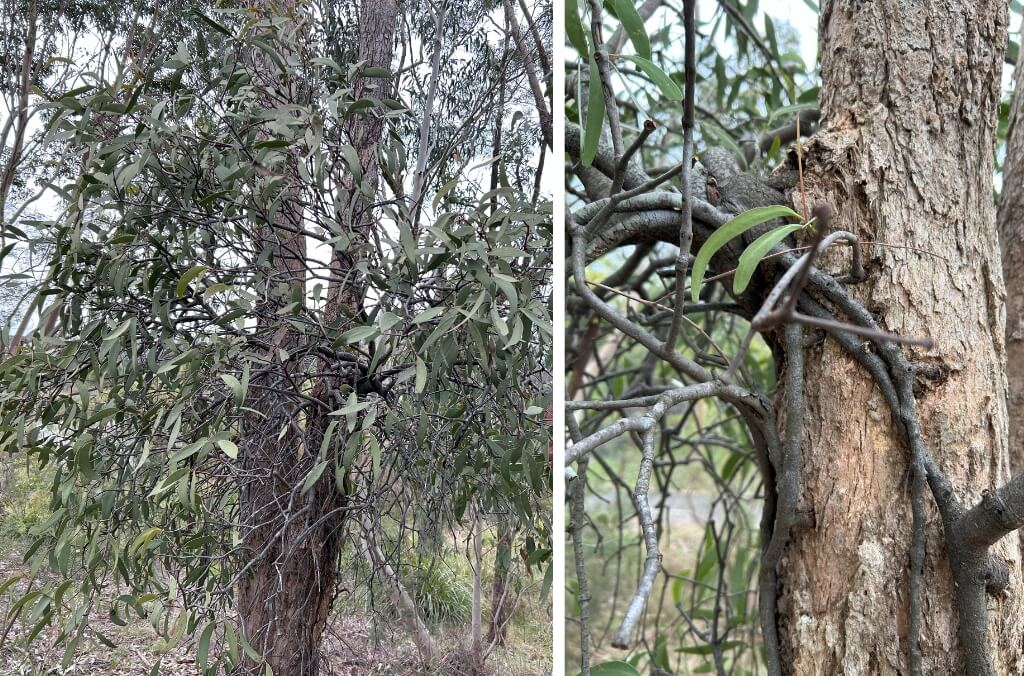
Cherry Ballart (Exocarpos cupressiformis)
This small native tree resembles a cypress, producing bright red berries from late spring to early summer—but its parasitic trick happens underground. The Cherry Ballart is known as a “hemi-parasite”, as it can produce its own energy through photosynthesis, but attaches its roots to a host plant to extracts extra nutrients. While this may impact the growth of the host, it does not kill it, with the Cherry Ballart supporting wildlife by offering shade, fruit, and nesting habitat for invertebrates, birds, and possums.
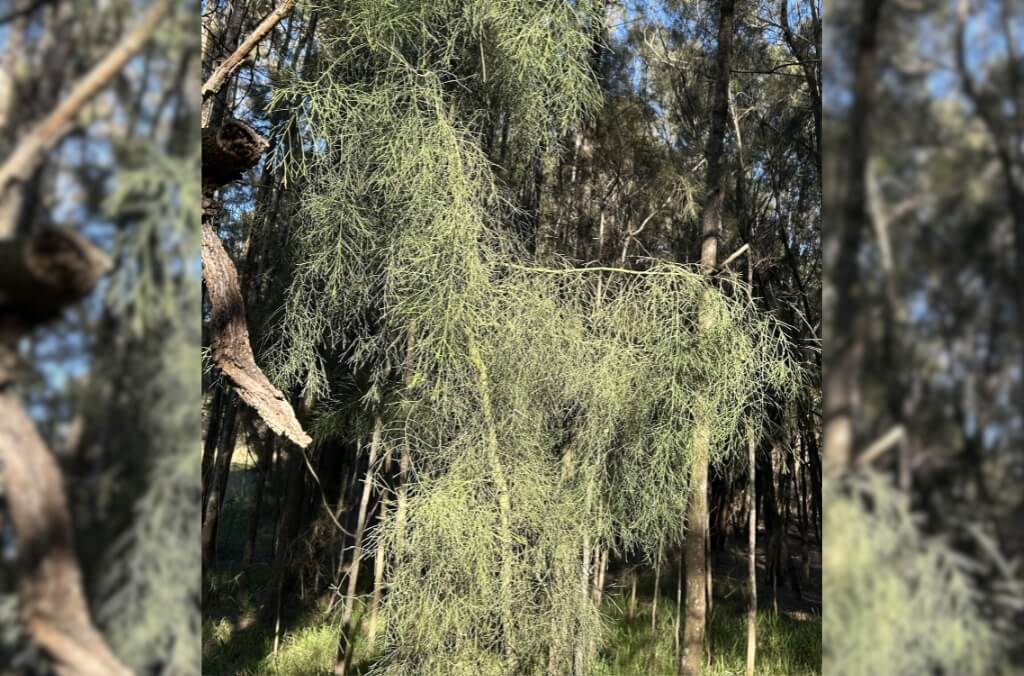
Slender Devil’s Twine (Cassytha glabella)
While most vine species only use a host for structural support, the Slender Devil’s Twine (Cassytha glabella) is a hemi-parasitic climber using suckers (haustoria) to draw nutrients from its host. Like so many other plants, the Slender Devil’s Twine begins life from the ground, but upon finding a host, it discards its roots and relies on extracted nutrients. This species is commonly found in woodlands across Sydney Olympic Park where, despite its nefarious name, its stem and berry-like fruit provide many beneficial ecosystem resources, including food for native fauna, such as the Blotched Dusky Blue Butterfly (Erina acasta; pictured below on Slender Devil’s Twine) and Common Whistling Moth (Hecatesia fenestrate), and nesting material for birds like the Red-browed Finch (Neochmia temporalis).
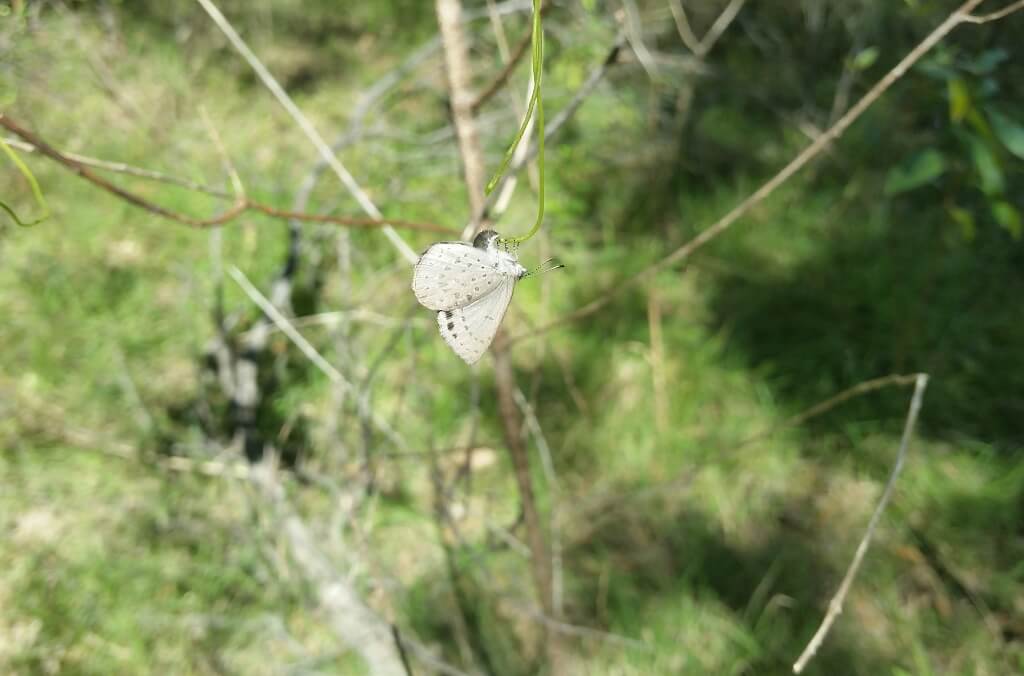
Why they matter
Though the word “parasitic” may suggest harm, many of these plants foster the Park’s rich biodiversity. By offering food and shelter to native birds, insects, and other wildlife, parasitic species contribute significantly to ecological balance in our native wetland and forest habitats.
Next time you stroll through Sydney Olympic Park, keep an eye out for these clever plants that are doing more than meets the eye.
You might also be interested in...


Sydney Olympic Park has been in busy preparing a gift for Park users that’s not wrapped in ribbon, but in science!
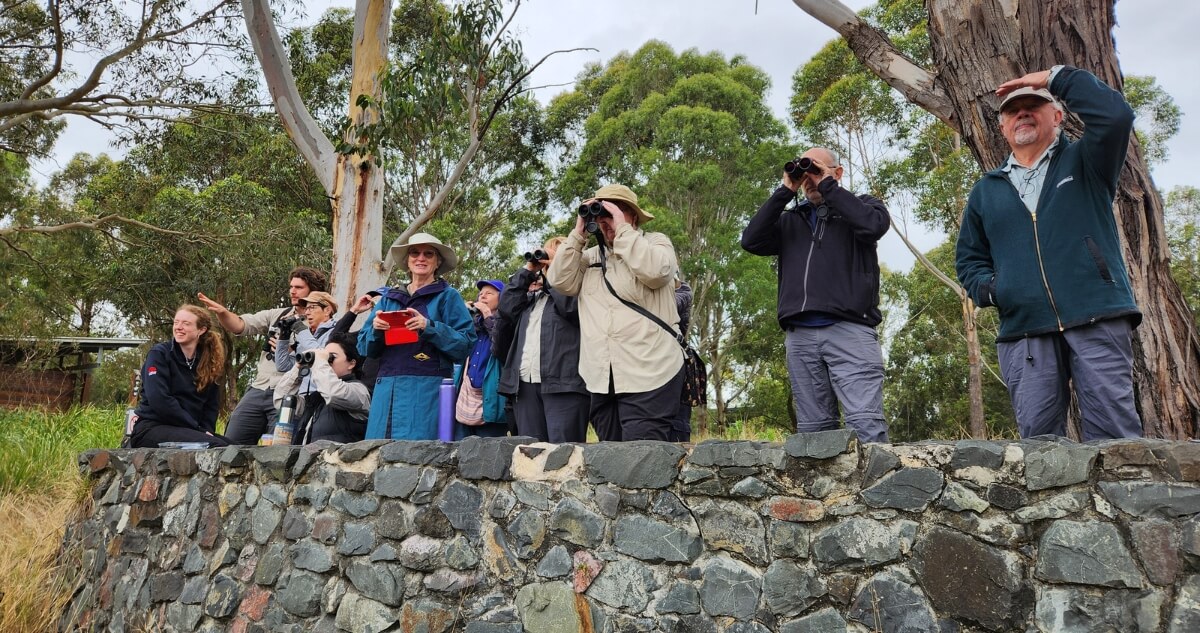

We’ve recently completed the 22nd annual Spring Bird Census 2025 at Sydney Olympic Park.
